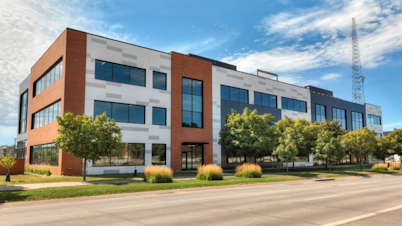
Healthier Buildings Series: How COVID-19 Shapes IAQ, Productivity & Efficiency
While the COVID-19 pandemic was no surprise to epidemiologists around the world, many in the built environment spent spring of last year reacting to empty buildings and lockdown restrictions. Now that vaccines are in the early stages of distribution, buildings professionals may wonder how operation trends will change in the long run.
In this 75F webcast session, hosts assert that COVID-19 has only accelerated pre-existing trends in the built environment, and examine what the data can tell us about how commercial buildings and their systems will adapt and affect occupants of the future.
Hosts are 75F Chief Evangelist, Bob French, and Nora Wang Esram, Senior Director for Research at the American Council for an Energy-Efficient Economy (ACEEE). Nora oversees ACEEE’s research agenda in a range of topic areas including buildings, industry, transportation, and behavior. Prior to joining ACEEE, Nora worked at the Pacific Northwest National Laboratory as a chief engineer and team lead in the Electricity Infrastructure & Buildings Division for ten years.
Ventilation and indoor air quality
As experts gain more knowledge about how COVID-19 spreads, it becomes increasingly clear that building systems have a role to play in mitigating indoor infections. Recommended strategies to decrease risk range from UV lights and bipolar ionization to filtration and ventilation.
Increased outdoor air ventilation remains a common direction from trusted resources such as the American Society for Heating, Refrigerating, and Air-conditioning Engineers (ASHRAE) and the Centers for Disease Control and Prevention (CDC). Experts say using more fresh air indoors will dilute the viral load, therefore lowering occupants' chance of infection. This recommendation comes with its own fair share of complications — equipment capacity and the weather, for example.
75F has covered outdoor air ventilation in detail over the course of our webinar series. To learn more about COVID-19 mitigation and outdoor air ventilation, watch the recording of this webcast or revisit previous recordings of specialized ventilation topics.
COVID-19 and energy use
Over the last three decades, total energy use in the U.S. has only increased by around 19 percent, according to data from the U.S. Energy Information Administration (EIA). This trend is despite economic and population growth, and is thanks to factors such as efficiency standards and financial incentives for efficiency, Nora says.

While the trends shown above seem reasonable at first glance, Nora points out the data reveals a few issues. In the commercial sphere, over-stressed hospitals in the U.S. saw a 600 percent increase in energy consumption. Despite half the U.S. population working from home during lockdown periods, unoccupied commercial buildings still consumed significant amounts of energy, ranging from 40 to 100 percent.
The pandemic created a confluence of events that have pushed occupants to become more aware of their health and safety in public spaces, and forced building owners to reevaluate how their facilities operate. Many of the changes, Nora says, have been slowly underway for the last decade anyway — teleworking, virtual conferences, and shared office spaces as examples.
“In many ways, the pandemic is accelerating the inevitable," Nora says in the webcast. "The question here is, how can we leverage the changes that have been accelerated by the pandemic to achieve our energy and carbon reduction goals, while supporting economy recovery and long-term prosperity?"
According to data from EIA, office spaces and brick-and-mortar stores are facing stagnant growth and significant disruption, Nora says, which presents a unique opportunity for repurposing and retrofits that can enhance indoor air quality (IAQ) and drive energy efficiency.
Enhanced IAQ and occupants of the future
Public demand for better IAQ is not new to the COVID-19 pandemic. As societal interest in living healthily has increased, so too has the desire for healthier spaces. The operational changes designed to lower COVID-19 transmission indoors — such as increased outdoor air ventilation — will also contribute to healthier, more productive occupants, and if executed judiciously, does not have to contradict sustainability goals.











